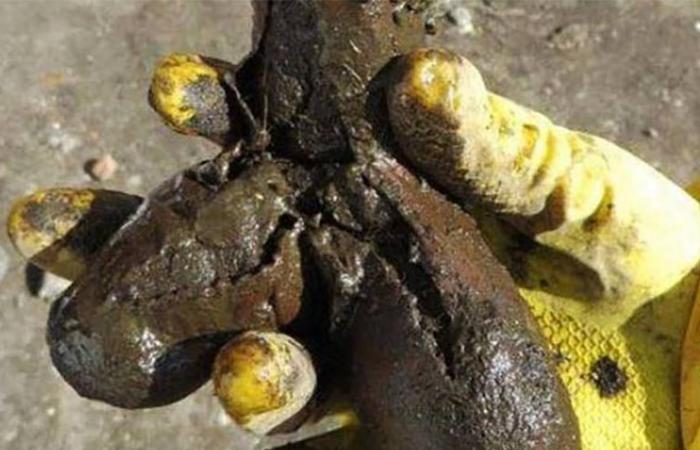Archaeologists made an unexpected discovery while excavating an old latrine in the Baltic city of Gdansk, Poland. So they dug up a 250-year-old sex toy.
As a result, the construction of the object and the location in which it was found suggest that the phallus-shaped artifact was used for personal pleasure, not for religious rituals.
The Regional Office for the Protection of Monuments in Gdansk said in a press release that the object was preserved in excellent condition. Furthermore, Discovery News reported that the relic dates from the second half of 1700.
In this way, it measures 20 centimeters in length and was made of leather. At the same time, full of bristles and made with a wooden tip.
The finding was at a fencing school
According to MailOnline, the discovery was made in the latrine of an old fencing school. Previous discoveries included several wooden swords used in training.
In the 2015 excavation, the researchers also found fragments of pottery and jewelry.
Thereafter, speculation revolved around why the phallic object was in the latrine. Thus, Marcin Tyminski, spokesman for the Regional Office for the Protection of Monuments, said that no one knows whether the sex toy was dropped by accident or on purpose.
It was certainly expensive. After cleaning, the researchers noted that it was made of high quality leather, Tyminski said. This discovery is incredible for the history of eroticism and for those who research the subject, he added.
So, know what is the oldest known artifact that represents a phallus.
Physical representations of the phallus
Physical constitutions of the phallus have existed for thousands of years. However, the oldest artifact recovered with the same shape is from the Paleolithic era, made of siltstone and polished to a high gloss.
The phallic object was found in the famous Hohle Fels cave near Ulm, Germany and dated to be approximately 28,000 years old.
Consequently, the intensity of the debate increases over whether the phallic object was used in religious rituals or for personal pleasure. The argument of those who believe they are used as a sex toy is that the artifact is quite polished and has a ‘natural size’.
Especially because, for millennia, there have been historical references to the use of sexual accessories. It is even known that Romans and Greeks, male and female, had phallic objects for pleasure.
For example, in the famous collection of folk tales, “Arabian nights and a thousand”, consoles are mentioned as being made of gold, silver or carved ivory.
Possibly, the Greeks were the pioneers in the use of leather or intestines of animals to cover a carved penis, in order to give a more natural touch.
At the same time, phallic objects were not only used for sexual pleasure. The doctor Hippocrates believed that hysteria was a condition caused by the lack of “hysterical paroxysm” (orgasm). Then, women were instructed to use ‘olisbos’ – stone or wooden sex toys – to prevent the onset of hysteria.
This belief was perpetuated until the beginning of the 20th century.
These were the details of the news 18th century sex toy was dug up in a Polish latrine for this day. We hope that we have succeeded by giving you the full details and information. To follow all our news, you can subscribe to the alerts system or to one of our different systems to provide you with all that is new.
It is also worth noting that the original news has been published and is available at time24.news and the editorial team at AlKhaleej Today has confirmed it and it has been modified, and it may have been completely transferred or quoted from it and you can read and follow this news from its main source.


